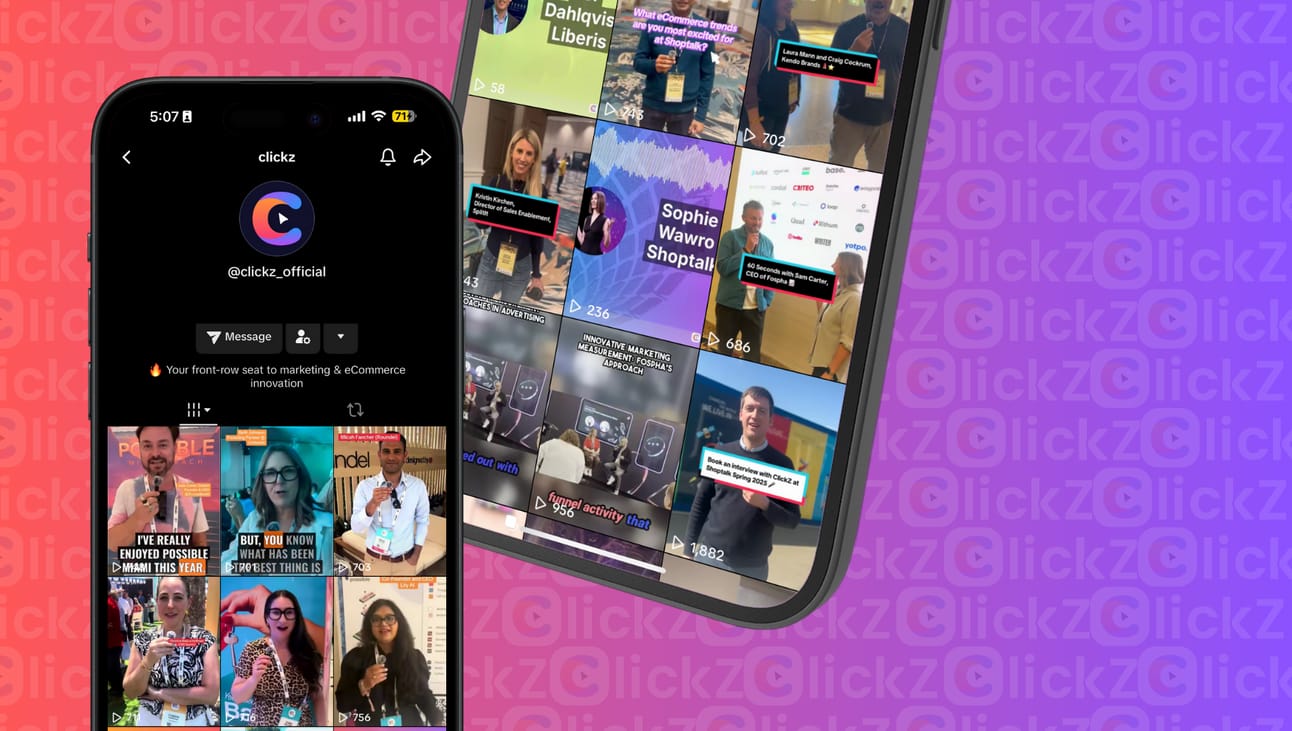At MADFest London, James Thompson of Smartly.io joined the conversation around what brands are trying to fix in their paid media workflows and why creative and media teams are finally starting to operate in sync.
As Senior Account Executive, Thompson focuses on helping brands deliver performance without sacrificing the creative quality that actually drives it. That means managing complexity, automating what can be automated, and aligning teams that were never historically built to collaborate.
“We’re here to engage with both incumbent and prospecting partners at the peak of the creative journey,” Thompson said. “We’re speaking to creative teams about quality, but also to media solutions teams. Everyone’s trying to solve the same problem from different angles.”
For Smartly.io, that problem is how to make personalization at scale both manageable and effective especially across dynamic, fast-moving paid social channels.
Automation Is Only Part of the Answer
The biggest barrier isn’t a lack of tools, it’s friction in the workflow. According to Thompson, brands today need thousands of ad variations to deliver relevant messaging at scale. But creating that volume without slowing teams down, or sacrificing quality, requires a more integrated process than most teams are used to.
“To be hyper-personalized, you need hundreds of thousands of variations,” he explained. “How do you provide that without interrupting the creative journey?”
Smartly.io’s approach is to centralize the production and delivery process, giving both creative and media teams visibility into what’s being built and how it’s performing. Automation helps with scale, but it’s not a substitute for collaboration.
“When you align creative and media within a shared workflow, you reduce friction,” Thompson said. “That’s how teams stay fast without compromising standards.”
Creative and Media Are No Longer Siloed
Thompson sees this alignment as part of a wider shift in how brands operate. Media teams are now being looped into creative planning, while creative teams are starting to get more performance data in return. Technology has a role, but culture change is just as important.
“Creative teams are much less siloed than they once were,” he said. “Media teams are being given more creative power and nuance.”
The ability to work from a shared system and see the downstream results of creative decisions is what makes iteration faster and more grounded in real performance.
With tools that support that alignment, teams can respond to what’s working and what’s not without waiting for a post-mortem weeks later.
Rethinking Attribution in Paid Social
Despite improvements in workflow and automation, attribution remains one of the trickiest parts of the marketing stack.
“The biggest challenge has always been bringing in the relevant data sets to actually understand what consumers are doing at the end of the workflow,” Thompson said. “From creative all the way down to buying and optimization and reporting, what’s the actual action taken by a consumer?”
Legacy attribution methods, such as last-click or seven-day windows, don’t reflect how people interact with campaigns across channels and formats. And while these models are still widely used, they rarely tell the full story, especially for brands investing in upper-funnel content or newer channels like TikTok.
That’s why Smartly.io is working with measurement partners that can offer a more complete and flexible view.
When Attribution Meets Creative
One of those partners is Fospha, which Thompson described as “a really, really exciting opportunity” in the attribution space, particularly in how it approaches paid social.
“It’s taking a really unique and new view on attribution, something that we fully support,” he said.
Smartly.io has integrated with Fospha and collaborated with them across shared accounts. “They’re speaking to a number of our incumbent clients and partners,” Thompson added.
For Thompson, the real advantage of integrating attribution into the creative workflow is the feedback loop it enables. “Now we can start to understand, with the creative team, what’s working or not working, what we should be doing more of or less of.”
That kind of clarity is increasingly expected, not just by performance marketers, but by the creative side too.
Editor’s Note
As brands push for clearer measurement of full-funnel performance, Fospha’s latest research report, Glow, breaks down how retail brands like Sweaty Betty and Lounge Underwear are turning early signals, such as branded search and engaged visits, into commercial outcomes. It’s one example of how attribution is becoming a core part of the creative and media feedback loop.
👉 Download the report.
💡 Don’t Forget…
Add us to contacts
→ [email protected] (so we don’t land in spam during the show)
Follow us live

That’s your 24-hour head start.
Keep this guide handy, make your picks, and book your meetings early — the most valuable conversations won’t wait. See you in Shoreditch.
— The Unofficially MAD//Fest Team

Unofficially MAD//Fest is a ClickZ Media publication in the Events division

